Vimy Ridge Trenches & Tunnels – Exploring the Battlefield
In my previous post I described the lead up to and reasons behind the Canadian victory at Vimy Ridge. Alison and I walked the battlefield proper and visited the Canadian National Vimy Monument, but that’s only half the story. In this post we’ll explore the Vimy Ridge trenches and tunnels in an effort to better understand the horrors the men serving on the Western Front endured, even without being exposed directly to battle.

The Vimy Ridge monument is located at the highest point on Vimy Ridge and is actually where the battle culminated. Have a look at this map of the battle plan and you’ll see that the Canadians started at the bottom and had to push their way up.
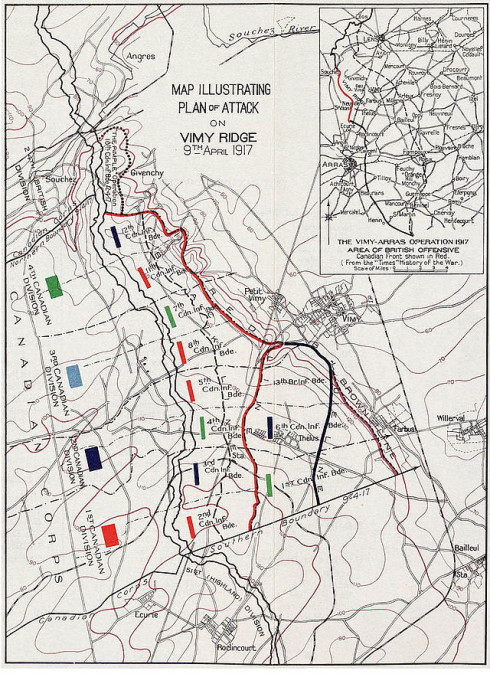
We are now going to walk down from the monument to the visitor centre which is about a kilometre away. This is where tours of the Vimy Ridge trenches and tunnel system begin. On the way we are passed by a number of vintage sports cars whose owners are out enjoying a Sunday drive on what is starting to become a nice day.
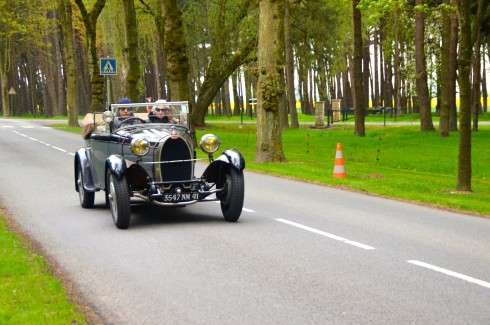
The forest at Vimy has regrown over the years, replanted with Canadian pines that have an odd slant to them. You can still see the pockmarks of shell holes underneath the trees.
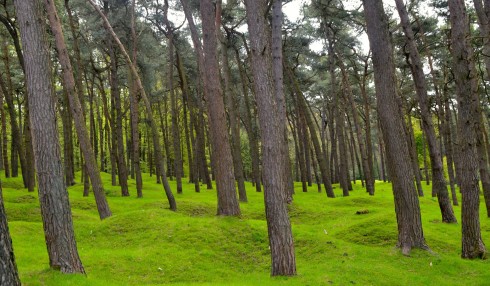
The visitor centre at Vimy Ridge when we visited in 2015 was a real disappointment – very small and quite ugly from the outside. I didn’t take a picture then because I knew it was being replaced with a new centre which opened for the 100th anniversary in 2017. That gives me a reason to return to see if it is as architecturally pleasing as the Juno Beach Centre.
The Grange Tunnel System
Like Beaumont Hamel, Vimy Ridge is administered by Veterans Affairs Canada and a few fortunate students get to act as interpreters and guides. Our tour starts with a visit to the extensive tunnel system that enabled men to get to the front lines without being exposed to enemy fire as well as providing protection from incoming artillery shells. They were also used to tunnel under German lines and create huge mines that were detonated at the start of the offensive. See my post on Lochnagar Crater for more details on this type of warfare. This is the Grange tunnel system.
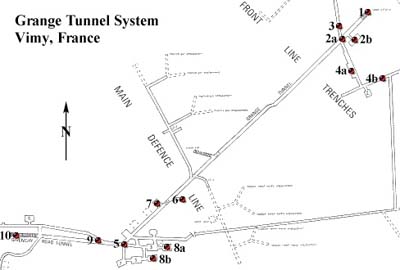
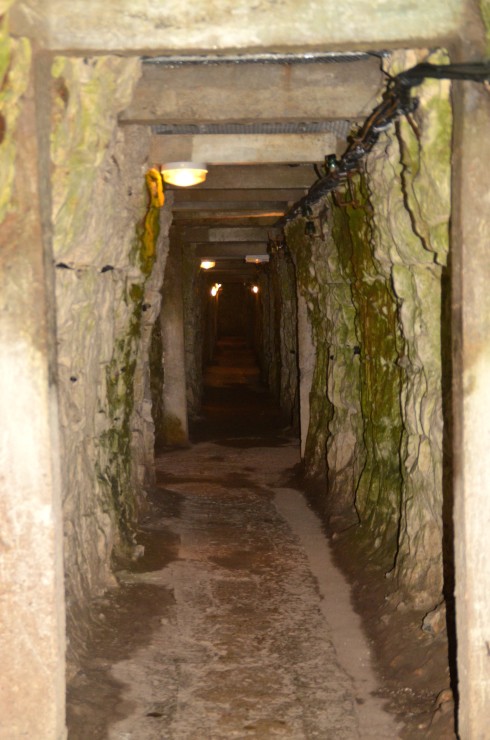
There were over ten miles of tunnels at Vimy Ridge, some which were 100 feet below the surface. These might not be the best places to be stationed if your were claustrophobic, but I think I’d take them any day over being in the trenches.
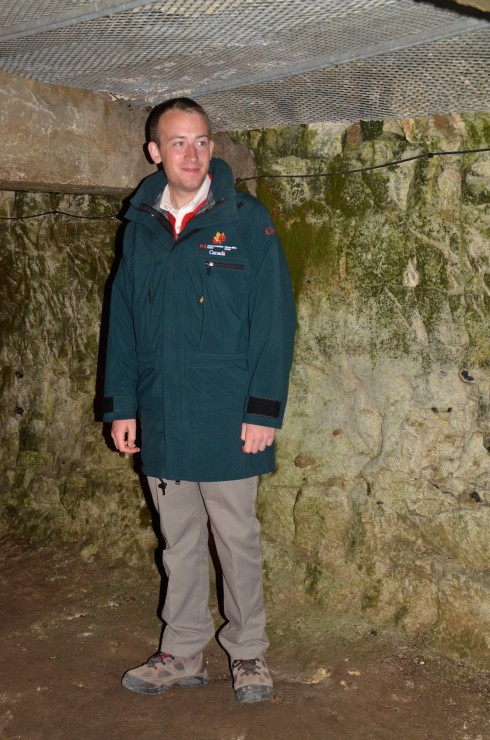
One thing that was a bit scary were all the cross tunnels running here and there off the main one. While there is a modern lighting system now, our guide turned it off to show us what it was like back in 1917 when the lights seemed to be about five watts. You could barely see your way and getting lost in this maze of tunnels seems highly doable. Don’t expect your GPS to help you out.
Vimy Ridge Trenches
Back on the surface we entered the forward line of the Vimy Ridge trenches; these were the trenches from which the infantrymen were expected to leap up and cross No Man’s Land to get to the German forward lines.
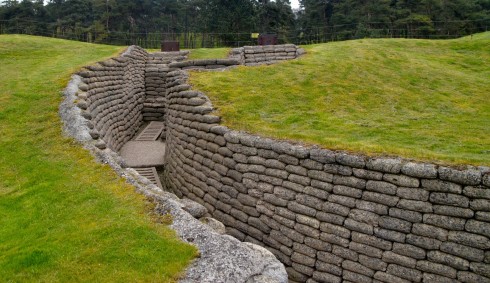
At Beaumont Hamel I wrote about the impossibility of the Newfoundlander’s being asked to cross hundreds of yards of open ground after leaving their forward lines before getting to the German lines. Here at the Vimy Ridge trenches it was completely different – the German front lines were in some places less than 100 feet apart. This photo is taken from the German forward line looking at the Canadian line. Those small rectangles are Canadian lookout and machine gun posts and the flag is well back from the trench.
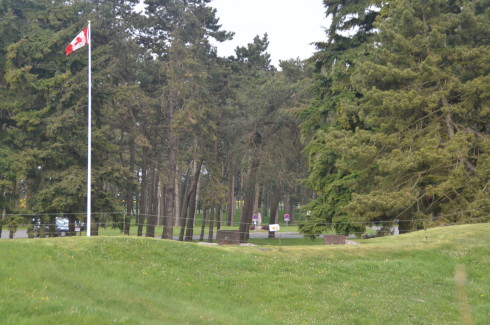
We’ve all heard stories about how soldiers on the Western Front often talked to, taunted, teased or in some cases sang Christmas carols with the enemy, but until seeing the actual proximity of the Vimy Ridge trenches I’d always thought these to be a bit apocryphal – not anymore. Looking out from the German line brought to mind the famous closing scene of the classic anti-war movie All Quiet on the Western Front where Lew Ayres reaches for a butterfly and is shot by a sniper. I could see that happening here.
On a happier note, here is Alison with my sisters Kaye and Anne inside the German forward trench – looking at it now, I guess it wasn’t quite as warm as I remember.
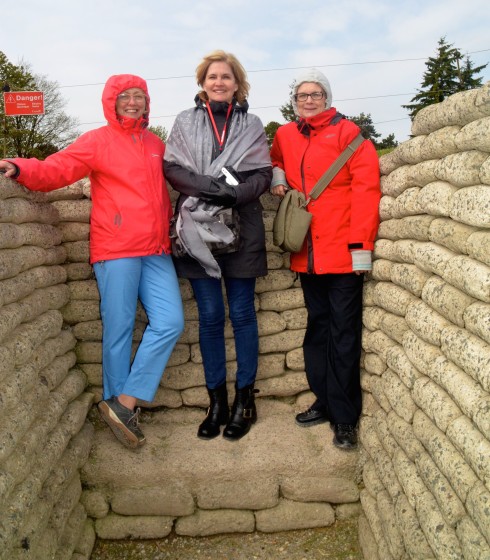
One final interesting note about the Vimy Ridge trenches and especially being in the German forward line – seems a fellow by the name of Adolph Hitler was also here at one time, acting as a dispatch runner until he got shot in the ass. For whatever reason that endeared him to Canadians and when the Nazis overran this place in WWII he ordered the Vimy Ridge monument not to be disturbed. I never thought we’d have anything to thank this madman for, but …
Next we head for Cabaret-Rouge-Cemetery to find the remains of many of those who died at Vimy Ridge.

